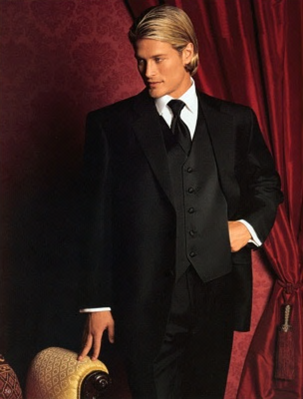Elle Lothlorien's Blog, page 2
February 17, 2013
Finding Your Inner Bitch on Valentine’s Day
“You can break down a woman temporarily
but a Real Woman will always pick up the pieces,
rebuild herself, and come back stronger than ever.”
-A
nonymous
“I’m strong because I’ve been weak.
I’m brave because I’ve been afraid.
I’m wise because I’ve been foolish.”
-Anonymous
Let’s talk about Cadbury eggs. No, seriously.
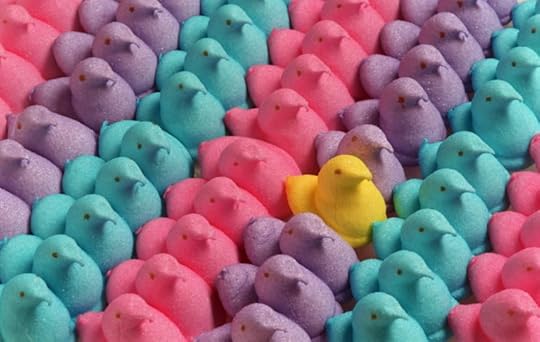
These are gross.
A good friend of mine loves Cadbury Eggs. You know—those fondant crème chocolate eggs that are ubiquitous as Peeps just before Easter. Sure, I’ve seen them at other times of the year, but they’re usually relegated to a remote corner of a Walgreens, lurking on an untouched section of shelf, and covered with enough dust to give you Black Lung Disease.
So I was surprised when I walked into a grocery store right before Christmas and saw a fresh-looking display front-and-center, overflowing with dust-free Cadbury eggs. I immediately called my friend, sure she’d be excited by the news. “You’re not going to believe this,” I said in a taunting, sing-song voice. “I am staring at an entire display of fresh Cadbury Eggs right now!”
I figured that after she did a backflip and saluted the judges, she’d demand that I buy every one of them on the spot. Instead, she sniffed, “I never eat anything the Easter Bunny’s laid before the Christ Child is born.”
Okaaaaaay.
Let’s talk about Forrest Gump. No, seriously.

This is life.
At a writer’s conference a couple of years ago, a group of us were enjoying a round of drinks in the hotel bar, when the topic of Forrest Gump came up. All agreed that it was a fine, funny movie and, well into our second, third, and even fourth cocktails, each of us threw out their favorite Forrest Gump platitude. There were the usual suspects: “Peas and carrots,” and “I was ruuunning!” and “Life is like a box of chocolates.”
My friend, who I will refer to as “Forrest” solely for purposes of anonymity, paused briefly before saying, “I never understood that one. ‘Life is like a box of chocolates, you never know what you’re going to get?’ What do you mean you don’t know what you’re going to get? You’re going to get fuckin’ chocolate!”
Oh dear.
Each of these anecdotes has two things in common. 1) Chocolate. 2) They both eventually found their way to a file in my computer called “Funny/Stupid Shit My Friends Say When Sober/Drunk That I Will Later Use in a Novel/Guest Blog Post at Some Point with Only a Minimal Effort to Hide Their Identity.”
No one is spared. To be fair to me (and I love to be fair to me), I give these people plenty of warning. When I meet someone for the first time and discover that they’re very funny, I tell them, “Anything you say can and will be used in my next book.” You can ask anyone.

Your Feminine Side. Someone get her some chocolate.
It’s at this point in my blog posts that I usually provide a tie-in of sorts between the humorous anecdote, Valentine’s Day, the business of publishing and the pleasure of reading. Now, you might think the two above stories share no immediately discernible commonalities. Ah, but you’d be wrong.
As you can see, they both have to do with chocolate. (Hey, it’s Valentine’s Day, it’s almost obligatory.) And…that’s pretty much it.
No, wait! There is one other thing. Let’s talk about Your Feminine Side. No, seriously.
Your Feminine Side is the part of you that you’re supposed to be “getting in touch with,” as if it’s an old college roommate you stopped calling fifteen years ago after they became richer and more successful than you. Instead of “Getting in Touch with Your Feminine Side,” I recommend that you “Find Your Inner Bitch.”
Because your Feminine Side wonders if their significant other will buy you chocolate on Valentine’s Day. Your Inner Bitch just drives to the store and buys those dusty Cadbury Eggs for herself.

Your Inner Bitch: too busy living to give a damn about a bouquet of flowers.
Your Feminine Side sits at home on Valentine’s Day and wonders if it’s okay to be single after all this time. Your Inner Bitch goes to a hot-tub party with other single girlfriends, and agrees with the group that if you were married/in a relationship, you’d probably be spending V-Day picking dirty boxer briefs off the floor, and telling him for the umpteenth time that him farting constantly in front of you drastically reduces the odds that he will ever bed you again (the limp bouquet of flowers he picked up on the way home notwithstanding).
So, whatever your status on Valentine’s Day—married or single—find Your Inner Bitch and just make it happen. Save Your Feminine Side for when you’re PMS-ing and reading one of my books.
And hey—don’t forget to have Your Inner Bitch pick up the chocolate on the way home.
I write contemporary romantic comedies that are loose riffs on the popular fairy tales I read as a child—stories I still love as an adult. You can find The Frog Prince, Gilding the Lily-pad, Alice in Wonderland, Sleeping Beauty, and Sleeping Beauty Wakes Up on Amazon.

December 9, 2012
Straight Down the Rabbit Hole: When Life Is Stranger (and Hotter) Than Fiction
 “The writer should never be ashamed of staring. There is nothing that does not require his attention.”
“The writer should never be ashamed of staring. There is nothing that does not require his attention.”
-Flannery O’Connor, attributed, Room to Write: Daily Invitations to a Writer’s Life
“Before I write down one word, I have to have the character in my mind through and through. I must penetrate into the last wrinkle of his soul.”
-Henrik Ibsen
“How do you come up with the characters for your books?
Are they based on real people that you know?”
I get this question all the time—all authors get this question. The short answer is: no. For one thing, that’s a terrible idea that could open the door to a slew of lawsuits for (depending on how you’re using them in your book) defamation of character, libel, use of likeness without permission, etc, which is why you see that dreadful disclaimer at the beginning of most novels (and at the end of movies): “All characters appearing in this work are fictitious. Any resemblance to real persons, living or dead, is purely coincidental.”
For the purposes of my latest novel Alice in Wonderland, perhaps the disclaimer the Three Stooges used would’ve suited better: “Any resemblance between these characters and any persons, living or dead, is a miracle.”
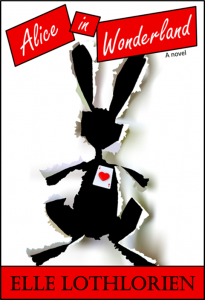 People often assume that I create the characters for my books by plunking myself down in a chair and churning out character descriptions and backstory like I’m writing a police report:
People often assume that I create the characters for my books by plunking myself down in a chair and churning out character descriptions and backstory like I’m writing a police report:
Name: Lapin Montgomery (aka “Rabbit“)
Age: Early thirties
Physical description: Six feet, two inches tall, blond hair, blue eyes. Hot enough to blister paint off the walls.
Identifying marks/tattoos: None
Occupation: Filthy rich sports reporter, international poker champion.
Family: Mother: Alice “Ally” Montgomery, former ambassador to France; sister: Souris Montgomery, personal assistant
That’s not really how it works–not for me anyway. In an earlier post (“If This Is Love, Then Why Am I Laboring?”) I wrote that if you try to ignore the characters in your head they will “follow you around everywhere you go and beg you to just listen to them. Just for a second, they will say. I have something important to tell you, they will say.”
In June, one particular shadowy figure started following me everywhere I went. I tried to ignore him, but he was always there, always lurking behind some corner in the back of my mind. It’s sort of like stargazing at this point: you can see stars in your peripheral vision, but as soon as you look at one dead-on, it seems to disappear. So it was with this guy; as long as I didn’t try to look right at him I could see the shadow morphing into something solid, a kind of rough outline of a human being. Once he got close enough, I sat down, poured myself a glass of wine, and asked him for his name.
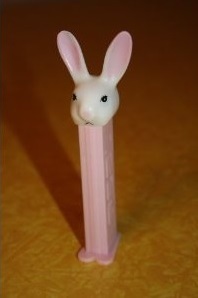
Prozac Pez—everyone wins.
The name is critical for me. If a character isn’t ready to share theirs, I’ll simply pour him or her a glass of wine and say, “Look, this is how it works: no name, no backstory. No backstory, no book—and I don’t care how much you follow me around. So let’s hear it.”
Somewhere at the end of September or the beginning of October, I finally asked him: “What’s your name?”
To his credit, he kicked down immediately. “Rabbit.”
“Uh…” I didn’t even know how to respond—I wasn’t even sure I’d heard him correctly—and I definitely wasn’t positive that I could repeat the name with a straight face. ”Your—your name is…” I cleared my throat and shifted in my seat. “Your name is, um, Rabbit?”
As I said this, I moved quietly and slowly for the Prozac that I keep on-hand for all my poor characters (they’re gonna need it before it’s all over, and I might just chew a few like Pez candy while I’m at it too). All of a sudden, I jerked straight up in my chair. “Wait—Rabbit? Rabbit? As in…”
I trailed off, leaned back in my chair, closed my eyes, and watched a sequence from the opening chapter of Alice in Wonderland (A Novel) unfold in my mind:
“What’s going on, Rabbit?”
We both look up, squinting against the sunlight. A tall, overly made-up, bottle-bleach blond comes to a stop in front of my mystery man, her huge fake boobs attempting a jailbreak from her microscopic royal blue bikini top.
Rabbit? I think. Please don’t say his name is Rabbit. I already feel sick enough.
“Nothing, honey,” he says, sounding annoyed. “Just trying to help someone out.” He nods at me. “Turns out she didn’t need my help.”
I feel really strange, like I’m floating. “Hey…you don’t look like a rabbit.” Then I do something completely out of character: I giggle.
Since his poker-playing nickname seemed to be “White Rabbit,” making him a towhead blonde was a no-brainer, and now I suddenly had a physical description and a few personality quirks on the heels of that:
Wearing white swim trunks, and holding a white hotel towel and a pair of sunglasses in one hand, a man ambles towards me. I use the word “man” loosely. A better description would be “the most beautiful specimen of Homo sapiens sapiens with a set of XY chromosomes to grace the planet Earth at this moment, or any other era, epoch, or age in history.” And it’s not just me who thinks this; his good looks and amazing body leave mute, slack-jawed women from eighteen to eighty in his long-legged wake.
He comes to a stop in front of me, and runs a hand through his still-dripping, platinum blond hair. “Are you okay? Did you step on a piece of glass or something?”
“Glass?” I know I sound like a dork, but that’s all I can get out of my mouth. It’s his eyes. They’re a disconcerting, otherworldly blue, flecked with streaks of frost white. Framed by the tanned skin of his face, they glow like an acetylene torch. And his hair. I mean, even wet you can tell it’s white-blond, the kind you normally only see on toddlers, the kind that turns green in chlorinated water.
Before I write a novel, I troll the internet and compile what I call “inspirational images” for each character—photos and graphics I can mull over and amalgamate, turning the shadowy character with a name into one specific, identifiable physical being. (It’s very similar to storyboarding for a movie.) This was the “storyboard” I originally created for Lapin “Rabbit” Montgomery. Pay particular attention to the man circled in red:
[image error]
Original Montage for Lapin “Rabbit” Montgomery in Alice in Wonderland.
Fast forward to a month ago. I was in the full throes of marketing for Alice in Wonderland, and I had just uploaded a variation of the images above onto my Facebook page to show fans “images and photographs that inspired the novel.” It was getting close to 9:00 PM so I made a final pass through the News Feed to see what my Facebook friends and fans were up to before calling it a night—and that’s when I saw this profile photograph float by:
Which, of course, made me do a massive double-take, so much did it remind me of the photo I’d just posted (not to mention a description in the book itself which I’ll get to in a moment):
According to Facebook, this mystery guy and I had, like, a gazillion mutual Facebook Friends. When I clicked on his Friends link, the names of old high school and college friends and acquaintances popped up. Now, the ol’ brain isn’t quite working like it used to, but suffice to say that there was no way this guy looked like that top photo in high school. Uh-uh. Even a dead person would’ve noticed that strolling through the high school hallways. So I messaged him (and it was all I could to refrain from using the salutation “Dear Rabbit”): “I keep seeing you pop up on “mutual friends” pages…what year did you graduate? [I]t seems like we would at least have been acquainted. Drawing a blank…help a girl out?”
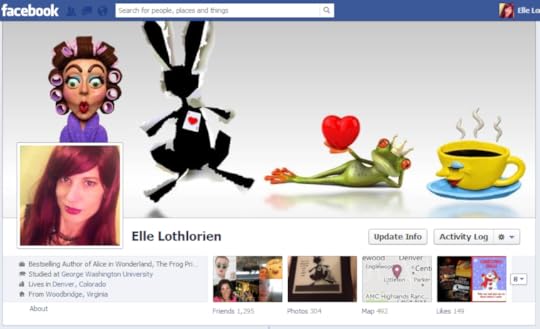 I received a cordial reply which basically amounted to “I don’t know you, I don’t recognize you. I am a very good-looking man with a limited amount of time on this Earth; please go away while I sit around and grace the world with my beauty.” (I kid; his reply didn’t read or imply anything of the kind.) Oh, and he added the name of the college he attended and the year he graduated from high school and went off to college…which just happened to be the same year I started at the same college.
I received a cordial reply which basically amounted to “I don’t know you, I don’t recognize you. I am a very good-looking man with a limited amount of time on this Earth; please go away while I sit around and grace the world with my beauty.” (I kid; his reply didn’t read or imply anything of the kind.) Oh, and he added the name of the college he attended and the year he graduated from high school and went off to college…which just happened to be the same year I started at the same college.
So I tried again: ”Hmm. Mystery gets deeper then, because I went to [the same university] for two years [at the same time you did] before I transferred.”
Now, I don’t know what kind of response I was expecting but what I got was certainly not it: “Yep, I remember you. Were you the one dating a fireman? I seem to remember that. I remember your song was that song by Firehouse. Funny. Hope you are doing awesome!”
Okay, full disclosure: it took me until three o’clock the next morning to even remember the name of the firefighter dude I was dating in college, let alone our love song. (And once I clicked over to YouTube and listened to it I realized there was a good reason why I blocked it out. “Love of a Lifetime.” Yeesh. Poor guy having to remember that song all those years.) But the fun didn’t stop there. He remembered that we’d driven back to our hometown together one weekend; he told me anecdotes about things my roommate and I had done; he recounted talks the three of us had in our dorm room…his recall was incredible.
Since then, we’ve exchanged emails, text messages, and spoken on the phone a couple of times, but it took a little while for me to work up the courage to tell him the real reason I originally contacted him (I mean seriously—how do you gently tell a virtual stranger that they look like your romance novel hero come to life?). But when I did finally tell him, he got a real kick out of it.
Which turned out be a good thing for me. Why? Because it was coming down to crunch time. It’s one thing to cut and paste graphics that you don’t hold the rights to from the internet as “inspirational graphics”; it’s another thing altogether to put those images into marketing images for your book. Right around the time I was thinking about what good-looking blond, male friends I could rope into letting me use their images for book promotion, I just happened to reconnect with this particular blond, handsome college friend. “Why not?” I thought. So I texted him: “I want to use your photo—the one that reminded me of my book character—in an Alice montage. May I? PRETTY PLEASE?”
He responded: “Yes, you may. Looking forward to seeing it.” Here is the montage I came up with:
[image error]
The graphics/photograph montage for Lapin “Rabbit” Montgomery.
I’d made montages for Alice and the other characters before I started writing the book as well. But the same problem I had with the Rabbit photos were also true for Alice; in short, mocking them up for private use was fine. Using them for a formal marketing campaign was no bueno. So I bought a red wig, dreamed a little dream about a fabulous party in a great dress, performed some Photoshopping wizardry, and produced a miracle:

Me in the foreground as Alice Faye Dahl from Alice in Wonderland. The original dress model is in the background.
I figured that while I was squeezing my virtual self into fabulous formal wear I couldn’t afford, I might as well give myself a date worth looking at:
The day I created this montage, my real-life friend texted me to tell that he was at that moment attending a weekend-long workshop. I replied: “No you’re not. You’re at the Tea Party Ball in Sydney Harbour on a yacht with me, my friend.” I sent him the image you see above, adding, “OK…keep in mind that I wrote this BEFORE I ever saw you on the timeline, BEFORE I ever contacted you….now you know why I took another look at your photo on the timeline? Eerie, yeah?” I forwarded him this excerpt from the book:
He disappears, and my backside has no sooner touched the taupe cushion then he’s back. No leather jacket this time, but a gray sports coat over a long-sleeve white button-up shirt. And the gray tinted glasses are back too.
“Looks cool,” my friend wrote, adding what I thought at the time was a joke: “I think I have a shot wearing sunglasses from that [same photo] shoot.”
Going along with the joke, I replied, “If you tell me [the sunglasses had] gray tinted lenses, I going to totally freak out.” At about 1:30 AM I received an email from him. A photograph was attached to a message that read simply: “The one with the sunglasses.”
[image error]
Okay, now it’s not funny anymore.
As Flannery O’Connor once said: “The writer should never be ashamed of staring. There is nothing that does not require his attention.”
So, like a dutiful writer, I paid attention and did a whole lot of staring, the entire time thinking that the situation was starting to feel like a poorly written slapstick comedy, something worthy of the Three Stooges disclaimer: “Any resemblance between these characters and any persons, living or dead, is a miracle.”
What can I say? Sometimes you pray to the literary gods and they deliver a miracle.
I write contemporary romantic comedies that are loose riffs on the popular fairy tales I read as a child—stories I still love as an adult. You can find The Frog Prince, Gilding the Lily-pad, Alice in Wonderland, Sleeping Beauty, and Sleeping Beauty Wakes Up on Amazon.

December 7, 2012
If This Is Love, Then Why Am I Laboring?
“You can,
you should,
and if you’re brave enough to start,
you will.”
―Stephen King, On Writing
“I hate writing.
I love having written.”
―Dorothy Parker
A friend of mine suffers from a condition called “rapid labor.” Her first child was born about two hours after her water broke; the second shot into the world (like a downed pilot ejecting from an aircraft, apparently) in about forty-five minutes. After the obstetrician finished his stint as a temporary football receiver jumping for a Hail Mary pass, he told her that if she had more children, she would need to schedule the delivery.
Not schedule a C-section, mind you, but a regular, natural birth.
I had a lot of fun thinking about how that conversation might go. “Hello, Dr. Samuels? Yes, this is Regina Darien. I finally got ahold of my fetus, and she says that Friday at four o’clock would work just fine for the delivery.”
Whenever my friend recounts what I call the Rapid Labor Tale of Horror, anyone with two X chromosomes in a twenty foot radius gloms onto the conversation like a refrigerator magnet, each of them offering unsolicited stories of fifteen, twenty, thirty hour-long horror shows endured while birthing one or more offspring.
This horrifies me for obvious reasons. I mean, I can’t imagine doing anything for thirty hours, no matter how fascinating it is (and when you throw in words like “unremitting pain,” “sobbing,” and “screaming”—well, we’re done with that conversation).
One of the most common questions I’m asked is: “How long does it take you to write a book?”

My go-to answer? “Less time than it takes a human embryo to fully gestate, but more time than it takes to kill a new houseplant.” Which is to say: anywhere from one to six months. Such a nice, tidy answer, yes? The problem is that it leaves out important words like “unremitting pain,” “sobbing,” and “screaming.”
It’s eerie how similar birthing a novel and birthing a baby seem to be. Publishing vernacular is littered with these pithy (yet telling) bits of writing advice:
“Sometimes you have to kill your babies.” In other words: sometimes you have to delete the parts of your book that are only there because you think they’re awesome, not because they serve any real purpose.
“It’s hard when you put a novel out into the world like your first-born child and someone tells you that your baby’s ugly.” Translation: Your first one-star review on Amazon stings a little.
“She will receive the remainder of her advance only after she delivers the completed manuscript to the publisher.”
A few months ago, I met a woman at a conference who had recently e-published her first novel. Her sales were flat and she was despondent. “It took me a year to write that book,” she said. “It just seems like it was a waste of time.” She shrugged. “Oh, well…I quit.”
“I’m sorry?” I said, thinking I hadn’t heard her correctly.
“I quit. I tried this, it didn’t work out, and so I quit.”
I’m not actually sure she got to the end of the sentence before I started laughing—long and loud. My chortles spread like kuru through those gathered ’round until every author there was enjoying a big, fat belly laugh.
“Good luck with that,” I said, wiping tears from my eyes. “You can’t quit.”
She frowned. “What do you mean? Why not?”
I stopped laughing. “Because I’ve tried.” Expressions turned somber and serious as several people nodded their heads in agreement and sympathy. “Hell, I never even wanted to be a writer in the first place,” I said.
Around me, more nods of agreement.

So why do writers, particularly of novels, do what we do?
Why do we sit alone at a keyboard, laboring hour after hour, day after day, book after book, listening to the little voices in our heads? Now two and a half years into my “published author” experience, I have had ample opportunity to think about why I do this. And the answer is simple: I can’t NOT write.
Not “I want to”—because that’s very rarely true.
Not “I have to”—because no one is forcing me.
Not “I should”—because most of the time I’m convinced I shouldn’t.
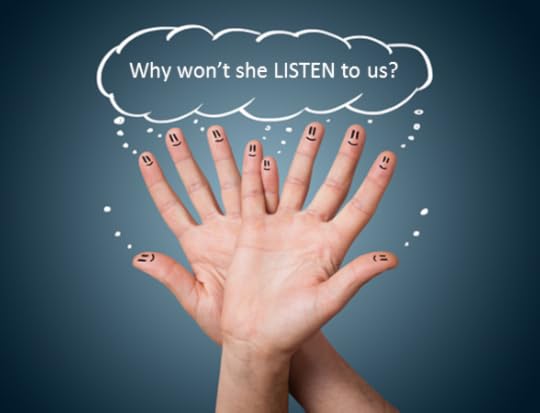
No. I literally can’t NOT do it. I am consumed at times by the stories in my head, by the characters in my mind who are as real to me as you or my mother or the guy who makes my chai latte at the local coffee shop. My head is a party, everyone’s invited, and they all want to talk to me. An author is like Ricky Gervais’s character in the movie Ghost Town. If ignored, your characters will simply follow you around everywhere you go and beg you to just listen to them. Just for a second, they will say. I have something important to tell you, they will say.
Indeed.
For two weeks in August (2012) I went to Australia, where I managed to drop my laptop on the ground and crash the hard drive in a parking lot somewhere between Sydney and Surfer’s Paradise. This was a downer because I had planned to work on my current novel while my friend was taking her turn at the wheel. But when I realized that my computer was dead, I was a little bit relieved. Finally! I thought. A real vacation!
Ha.
Not so much, it turns out. What ended up happening is that I lasted about twenty-four hours before I bought a notebook and a pen in a gift shop and, over the next few days, rediscovered fine motor muscles that had atrophied from disuse in the last ten years. When I woke up one memorable morning, my hand was so cramped and stiff that I had to soak it in a sink of hot water just to get it out of the claw-like position it was stuck in.

Why do I write? Why, especially as I near the end of a novel, do I often go days without showering or talking to another living soul? Why do I labor over a keyboard, bracing myself for the creative contractions that hit me regularly every few chapters, during which I’m sure I’ll never be able to write another word? Why, after I deliver a novel, do I take a month off and then dive right back into another three-to-six-months of solitary confinement?
“You must love it,” people say to me.
“It’s a labor of love,” I typically respond. I say that—”it’s a labor of love”—and it is, but please, Please, PLEASE don’t mistake me, not even for a second: I do NOT love writing.
It. Loves. Me.
And it loves me enough for the both of us.
I write contemporary romantic comedies that are loose riffs on the popular fairy tales I read as a child—stories I still love as an adult. You can find The Frog Prince, Gilding the Lily-pad, Alice in Wonderland, Sleeping Beauty, and Sleeping Beauty Wakes Up on Amazon.

December 6, 2012
Let’s Talk About My Pants. No, Seriously.
 On a chilly afternoon in late January, I was in New York City to speak on the “Successful Self-Published Authors” panel alongside New York Times bestselling authors Bella Andre and Bob Mayer at the Digital Book World Expo. The following morning, I was standing in my friend’s New York City living room in a blind panic with only two hours to make my flight home, wearing nothing but a form-fitting “sweater dress” (I use the term loosely; the thing was so short you could almost see my vulva), thigh-high tights, and high heel lace-up booties, looking for all the world like the kind of escort whose boss has the title of “The [fill in the city] Madam.”
On a chilly afternoon in late January, I was in New York City to speak on the “Successful Self-Published Authors” panel alongside New York Times bestselling authors Bella Andre and Bob Mayer at the Digital Book World Expo. The following morning, I was standing in my friend’s New York City living room in a blind panic with only two hours to make my flight home, wearing nothing but a form-fitting “sweater dress” (I use the term loosely; the thing was so short you could almost see my vulva), thigh-high tights, and high heel lace-up booties, looking for all the world like the kind of escort whose boss has the title of “The [fill in the city] Madam.”
I normally wear this lovely ensemble with a pair of skinny jeans and a long-sleeve cardigan of the same color. The problem? I can’t find my pants. And without pants, this outfit won’t fly. Literally.
Of course, I do have two other choices: 1) The outfit I flew to New York in, which now boasts an impressive kung pao chicken stain on the front; 2) The outfit I wore to the conference the day before, which involved thigh-high boots with four-inch heels and a hidden two-inch platform. These are fine for tottering a few feet straight to an awaiting cab; they’re no bueno for hiking through miles of airport—well, not if I wanted to have feet rather than bloody stumps when I got to Denver.
So I quickly improvised. Instead of wearing the long-sleeve sweater, I tied it around my waist, and closed the gap in front with a hair clip. Voila! A makeshift “sweater skirt” if you will. To the rest of the world, this looks perfectly ordinary.
Unfortunately, “the rest of the world” doesn’t include the TSA.
In the security line at La Guardia, I was still silently congratulating myself on my “fly by the seat of your pants” sartorial skills, when I heard a loud, impatient voice on the other side of the walk-through metal detector: “Take off the sweater around your waist.” I froze. “Ma’am,” he barked, “I need you to take off the sweater around your waist.”

Instead of beating around the bush (so to speak), I said point-blank: “I’m not wearing anything underneath it.”
This caused quite a ruckus as I got ushered into the rectangular enclosure a few feet away while they scrambled to find a female TSA ass-grabber. (I love these little enclosures, I really do. I mean, what are the chances that your fellow-travelers are going to be able to see your body cavity search through all that glass, right?)
A female TSA employee joined me in in the see-through barn stall almost immediately and said, “I’ve been told that you aren’t wearing any pants.” She used the same ultra-formal, serious-as-a-heart-attack tone a CIA agent might use when interrogating a spy: “I understand you were sent here to steal our nuclear launch codes.”
By this time, the plastic trays containing my laptop, purse, medications, liquids/gels, and full-length coat had reached the end of the roller belt. My carry-on rolled along, crashing into the bins and pushing some of them off the belt onto the floor. I was trying very hard not to scream in frustration (screaming in the middle of airport security is a poor idea), so instead of answering her I simply hiked up the wraparound sweater enough to show her that between the top of the thigh-high tights and the bottom of my crop-top sweater, there was nothin’ but birthday suit.
She took a startled step backwards, holding up her hands in front of her to shield herself from the horror of my thigh. “Ma’am!” she shouted. “No one’s asking you to do that!”

At this point, I’m certain this debacle’s going to end with me missing my flight and having my name added to the No Fly/No Pants List. But apparently the sight of my thigh was enough to convince her that I wasn’t a threat to national security. Not only did she not frisk me, she and the other TSA officials had a good laugh at my expense (I’ve so rarely seen TSA employees smile that I wasn’t certain that they even had teeth). They actually helped me gather and repack my belongings, with one of them calling ahead to the gate to let them know that I’d been held up at security, and that I was making a run for it.
Thanks to them, I made my flight. I’m not sure if those people make great airport security, but I think with the right training, they’d all made fantastic bellhops. Maybe even valets.
Now. Let’s talk about frogs. No, seriously.

By May of 2010, I’d finished a book I’d titled The Frog Prince, which is about a Denver sex researcher who meets the man who would have been the king of Austria—if the monarchy there hadn’t been abolished in 1918. I thought I had a pretty good book, but I also had two problems: 1) I had no idea what kind of book it was; 2) I had no graphic design skills.
Perhaps these require more explanation.
Point 1: When I originally started writing novels, I wrote thrillers. I’d read thrillers since I was a kid, I read them as an adult. I “got them.” Chick-lit, contemporary romance, rom-com—these were mysterious genres I knew nothing about. Sure, I’d seen movies like Bridget Jones Diary and The Devil Wears Prada (and enjoyed them very much), but hell, I didn’t even know those movies were adapted from books until about two years ago!
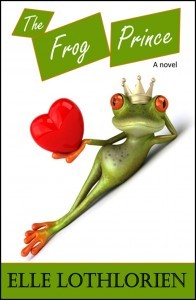 So I asked a friend to read the first few chapters of The Frog Prince and tell me what kind of book she thought it was. Her email was short and to the point: “It’s a romantic comedy, you dumbass.”
So I asked a friend to read the first few chapters of The Frog Prince and tell me what kind of book she thought it was. Her email was short and to the point: “It’s a romantic comedy, you dumbass.”
Point 2: After a failed attempt at traditional publication with my novel Virgin (A Thriller) a few years before, I was seriously considering self-publishing The Frog Prince. Of course, when you self-publish, all the things a traditional publisher would do for you is now your job—including designing a book cover. A reasonable person at this point would’ve researched rom-com, chick-lit, and contemporary romance book covers to see what readers of these genres expected, or to find out what kind of cover “sold.”

You’ve probably figured out by now that I am not a reasonable person. I may not even be clinically sane. So I did what any author stumbling into the world of self-publication with no graphic design skills would do: I used my mad PowerPoint abilities to design a book cover.
I wish I was kidding.
If you were browsing chick-lit titles in the Kindle Store in July of 2010, you may have run across The Frog Prince. If so, you would’ve seen this cover. If you were browsing chick-lit titles in the Kindle Store in late 2012, you may have run across The Frog Prince. If so, you would see the same cover. Almost without exception, every email I’ve received from fans in the last year and a half contains a variation on the phrase “I love that little frog on the cover!” Fans send me frog lawn ornaments, lighters, candles, bath soap. I’ve even received a crocheted frog tea cozy. They take pictures of frog statues and tag them on Facebook with my name.

It wasn’t until The Frog Prince became an Amazon best-seller in December of 2010 that I really took a look at other book covers in the contemporary romance genre. And what I saw was a lot of variations on the following: pink, pink, pink, followed by hearts, wedding cakes, wedding dresses, wedding rings, and pink. Which is not to imply that these covers aren’t good! In fact, one of my favorite covers is self-published author Beth Orsoff’s Romantically Challenged, and contains both pink and hearts!
So why am I telling you this, and what does this have to do with traveling half-naked? It’s simple:
Sometimes cobbling together a solution in a state of well-meant ignorance is the recipe for a better outcome than you otherwise would’ve had if you’d put a little more thought into it.
If I hadn’t been so frantic to make my flight on time, I wouldn’t have rigged up a barely-there solution to my missing pants problem. And without the TSA repacking my stuff and calling the gate, I almost certainly would’ve missed my flight home.
You know that little ribbon on an Amazon product page that reads “People who bought this book also bought…”? In the case of The Frog Prince, that little green frog on the cover stuck out like a sore thumb in a sea of pink. Readers probably clicked on it thinking, “What the…” expecting to find out that it had simply been miscategorized. When they read the book description, many were intrigued enough to buy it and read it. And they told their friends, and they told their friends…
The Frog Prince might have ended up as just another pink rom-com cover, lost in shades of pink. Instead, The Frog Prince made its way onto three Amazon Top 100 lists: Comedy, Contemporary Romance, and Humor, rocketing all the way to the top of the Humor Top 100 ahead of both Janet Evanovich and Tina Fey in July of 2012.
So, with a better understanding of what constitutes the typical rom-com book cover, what are the chances that I caved to convention when designing book covers after The Frog Prince?
About as likely as me trying to fly again without pants.
I write contemporary romantic comedies that are loose riffs on the popular fairy tales I read as a child—stories I still love as an adult. You can find The Frog Prince, Gilding the Lily-pad, Alice in Wonderland, Sleeping Beauty, and Sleeping Beauty Wakes Up on Amazon.
December 3, 2012
Fairy Tales: Making Your Kids Hate You, Lie To You, and Run Away From Home Since 1812
12/03/2012
“If you want your children to be intelligent, read them fairy tales. If you want them to be more intelligent, read them more fairy tales.”
―Albert Einstein
“Mothers didn’t understand that children aren’t frightened by stories; that their lives are full of far more frightening things than those contained in fairy tales.”
―Kate Morton, The Forgotten Garden
Once Upon a Time
Imagine you’re reading a bedtime story to your child. Little Jenny is all tucked in in her footie pajamas, you’re perched on the side of a bed with a large, important-looking tome with fancy pictures opened before you. You intone, “Once upon a time there was a girl who wore a red cape, and 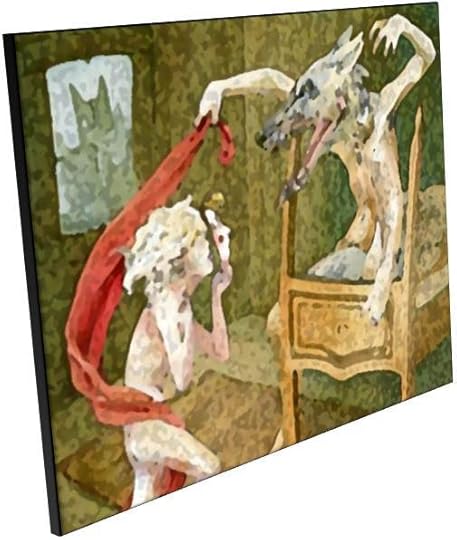 everyone called her Little Red Riding Hood. One day she was walking through the woods to take food to her ailing grandmother, but when she got to her grandmother’s cottage she found that the invalid was…not quite herself.”
everyone called her Little Red Riding Hood. One day she was walking through the woods to take food to her ailing grandmother, but when she got to her grandmother’s cottage she found that the invalid was…not quite herself.”
Sound familiar?
“Of course!” you say. Very likely, you are automatically filling in the “What big eyes you have!” and “What big hands you have!” Or perhaps you’re beaming as you read this post, full-to-bursting with fond memories of your own parents reading you this very story. Maybe you even have a shadowy recollection of the Big Bad Wolf asking Red to take off all her clothes and get into bed with him. Or maybe you recall the version where Red decides to distract the Wolf by doing a slow, sultry strip tease (safety tip: if you’re about to be eaten by a large carnivore, this is an absolutely terrible idea) before making her escape.
Wait—what’s that you say? Not ringing a bell?
In sixth grade I became obsessed with reading fairy tales—especially after I discovered the non-Disney versions. In fact, when I happened upon the original Grimm stories in my middle school library, I assumed that these were the sexed-up, violent versions written after the Disney versions were penned in order to satisfy the lustful, depraved tendencies of modern readers!
Instead of going to lunch in the cafeteria, I’d go to the library. There, huddled over those so-called “fairy tales,” I was transported to a world where the Little Mermaid didn’t get pretty legs and a pretty prince; Little Red Riding Hood wasn’t saved by a convenient, passing woodcutter. In the Little Mermaid story that I remember, the prince runs off with another woman and the heroine commits suicide. Little Red Riding Hood? Well, she drops trou and hops in bed with the Wolf. And every once in a while, sitting in that library, I’d lift my head, look around, and think, “Do adults know what is in these stories?”
Suffice to say that the Brother’s Grimm versions were, well, grim.
Did you even wonder why patient, loving mothers get bumped off so quickly in fairy tales? Even if they’re replaced—as in Hansel and Gretel and Snow White—the alternates are selfish, wicked creatures, who boot the children out to fend for themselves as soon as possible.
Why? Why not give these poor orphans someone to braid their hair, help them with their homework, or at least set some practical teeth-brushing, TV watching, cookie-eating limits?
Because fairy tales, besides the rich legacy they leave in the subconscious, do more than delight and entertain: they teach our children how to grow up.
 Good mothers—well, they nurture, cheer, and protect. In life, that’s their job, and it’s a vital part of keeping children healthy and resilient. They are the guardians of childhood, and there is no job more important. So why whip out such Grimm stuff at bedtime, where each gory tale makes an M-rated video game look like Ms. PacMan?
Good mothers—well, they nurture, cheer, and protect. In life, that’s their job, and it’s a vital part of keeping children healthy and resilient. They are the guardians of childhood, and there is no job more important. So why whip out such Grimm stuff at bedtime, where each gory tale makes an M-rated video game look like Ms. PacMan?
Because even though they come from the past, fairy tales speak to the future. The setting is perhaps unfamiliar, but the lesson is timeless.
Why Children Need to Make Mistakes
Jack and the Beanstalk concerns a simpleton (read: likeable, D-average class clown) whose mother sends him on a simple task: go to town and sell the cow. Instead, Jack trades their only source of income for a magic bean. Disgusted with her son’s disobedience and stupidity, the mother throws the bean out the window and sends Jack to bed without supper. The next morning, the beanstalk has grown so tall it pierces the clouds–and you all know how the story ends. (If you don’t, I’ll give you a hint: much, much better for Jack and his mum than for the rich giant at the top who would come to learn that it’s
not the fall that kills you—it’s the sudden stop.)
What does Jack and the Beanstalk teach a child? Well, since it’s doubtful that your child will be haggling with local market-goers, angling for a sweet price for the family bovine, I would venture that the lesson learned is simply this: trust. To trust that even if the world perceives a child to be foolish, in their hearts they are perhaps wiser than we know. To trust that things are not always what they seem, and that taking a risk can have incredible, life-affirming consequences.
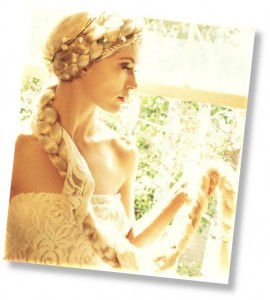 Running Away from Home
Running Away from HomeOf course, we don’t really want our children to run away from home. (Well, unless the child in question is a girl between the ages of 13 and 17, one who has a most unbecoming habit of saying things to you such as “The reason why you’re single is because you’re a loveless wreck!” But I digress…)
Let’s take a look at the story Rapunzel. Locked in a tower by a wicked witch pretending to be her mother, Rapunzel grows up alone and lonely. When a handsome prince charms her out of her prison, the wrathful witch punishes them both. Eventually, however, Rapunzel and her prince find one another and live happily together (after she gets a trim and a new, stylish ’do; turns out living in isolation a hundred feet in the air in a castle with no door really hinders the timely delivery of your issues of Cosmopolitan and Vogue).
What message do our girls (and boys) take from this story? Rapunzel, I think, is about taking risks. Trapped in the tower, Rapunzel’s physical needs are met, but her soul is starved for affection and companionship. Only by leaving her ‘safety net—which is also her prison—can she hope to find true happiness.
Breaking Promises
 In The Frog Prince, a princess drops her favorite gold ball into a well and starts to cry. A frog offers to find her ball in exchange for a smooch. The princess accepts the bargain, but as soon as she has her ball, she reneges and runs back to the castle. The irate frog follows her, and eventually gets his way. Turns out, it’s not the princess he wants, just the kiss—it breaks a spell and restores him to all his princely glory. When she sees him in his true form, the princess is very, very sorry—but too late.
In The Frog Prince, a princess drops her favorite gold ball into a well and starts to cry. A frog offers to find her ball in exchange for a smooch. The princess accepts the bargain, but as soon as she has her ball, she reneges and runs back to the castle. The irate frog follows her, and eventually gets his way. Turns out, it’s not the princess he wants, just the kiss—it breaks a spell and restores him to all his princely glory. When she sees him in his true form, the princess is very, very sorry—but too late.
In many ways, the lesson in Frog Prince is perhaps the harshest of all. While parents are always willing to forgive and forget (well, at least forgive) the world does not always offer second chances. Whether it’s looking both ways before crossing the street, or not making a promise we don’t intend to keep, The Frog Prince offers our children a valuable life lesson they would do well to incorporate. (Note: In some versions, the frog does forgive the princess and marries her. We must assume that he was after her trust fund or that living in a well and eating flies for all those years turned his critical thinking skills to mush.
Whether your child is born to a life of privilege or one of hardship, fairy tales can be a grounding influence—yes, happiness is yours for the taking, but no one hands it to you. So grab your sword, horse, cape, and boots, (translation: college education, used car, trust, and faith), and conquer the world.
I write contemporary romantic comedies that are loose riffs on the popular fairy tales I read as a child—stories I still love as an adult. You can find The Frog Prince, Gilding the Lily-pad, Alice in Wonderland, Sleeping Beauty, and Sleeping Beauty Wakes Up on Amazon.



